Pragmatic Programmer, The: From Journeyman to Master
Andrew Hunt
David Thomas
Publisher: Addison Wesley
First Edition October 13, 1999
ISBN: 0-201-61622-X, 352 pages
Straight from the programming trenches, The Pragmatic
Programmer cuts through the increasing specialization and
technicalities of modern software development to examine the
core process--taking a requirement and producing working,
maintainable code that delights its users. It covers topics
ranging from personal responsibility and career development
to architectural techniques for keeping your code flexible and
easy to adapt and reuse. Read this book, and you’ll learn how
to:
Fight software rot;
Avoid the trap of duplicating knowledge;
Write flexible, dynamic, and adaptable code;
Avoid programming by coincidence;
Bullet-proof your code with contracts, assertions, and
exceptions;
Capture real requirements;
Test ruthlessly and effectively;
Delight your users;
Build teams of pragmatic programmers; and
Make your developments more precise with automation.
Written as a series of self-contained sections and filled with
entertaining anecdotes, thoughtful examples, and interesting
�
analogies, The Pragmatic Programmer illustrates the best
practices and major pitfalls of many different aspects of
software development. Whether you’re a new coder, an
experienced programmer, or a manager responsible for
software projects, use these lessons daily, and you’ll quickly
see improvements in personal productivity, accuracy, and job
satisfaction. You’ll learn skills and develop habits and
attitudes that form the foundation for long-term success in
your career. You’ll become a Pragmatic Programmer.
�
Preface.......................................................................................................12
Who Should Read This Book?...............................................................12
What Makes a Pragmatic Programmer?..............................................13
Individual Pragmatists, Large Teams..................................................14
It's a Continuous Process......................................................................15
How the Book Is Organized ..................................................................15
What's in a Name? ................................................................................15
Source Code and Other Resources ....................................................16
Send Us Feedback..............................................................................16
Acknowledgments..............................................................................16
What's in a Name? ................................................................................18
Source Code and Other Resources ....................................................18
Send Us Feedback..............................................................................18
Acknowledgments..............................................................................19
The Cat Ate My Source Code................................................................19
Take Responsibility ...........................................................................20
Related sections include:................................................................21
Challenges ......................................................................................21
Software Entropy ..................................................................................21
Putting Out Fires...............................................................................22
Related sections include: ...................................................................23
Challenges..........................................................................................23
Stone Soup and Boiled Frogs................................................................23
The Villagers' Side.............................................................................24
Related sections include:................................................................25
Challenges ......................................................................................25
Good-Enough Software .........................................................................25
Involve Your Users in the Trade-Off ................................................26
Know When to Stop ...........................................................................26
Related sections include:................................................................27
Challenges ......................................................................................27
Your Knowledge Portfolio .....................................................................27
Your Knowledge Portfolio..................................................................28
Building Your Portfolio......................................................................28
Goals...................................................................................................29
Opportunities for Learning ...............................................................30
Critical Thinking ...............................................................................30
Care and Cultivation of Gurus.................................................................30
Challenges ......................................................................................31
Communicate!........................................................................................31
Know What You Want to Say............................................................32
Know Your Audience .........................................................................32
Figure 1.1. The wisdom acrostic—understanding an audience ...32
�
Choose Your Moment.........................................................................33
Choose a Style....................................................................................33
Make It Look Good ............................................................................33
Involve Your Audience.......................................................................34
Be a Listener......................................................................................34
Get Back to People.............................................................................34
E-Mail Communication.............................................................................34
Summary ...............................................................................................35
Related sections include: ...................................................................35
Challenges..........................................................................................35
Chapter 2. A Pragmatic Approach ...........................................................37
The Evils of Duplication........................................................................37
How Does Duplication Arise?............................................................38
Imposed Duplication..........................................................................39
Inadvertent Duplication....................................................................40
Impatient Duplication .......................................................................42
Interdeveloper Duplication ...............................................................42
Related sections include:................................................................43
Orthogonality ........................................................................................43
What Is Orthogonality? .....................................................................43
A Nonorthogonal System ...............................................................44
Benefits of Orthogonality ..................................................................44
Gain Productivity...........................................................................45
Reduce Risk....................................................................................45
Project Teams ....................................................................................45
Design.................................................................................................46
Figure 2.1. Typical layer diagram .................................................46
Toolkits and Libraries .......................................................................47
Coding ................................................................................................48
Testing................................................................................................49
Documentation...................................................................................49
Living with Orthogonality.................................................................49
Related sections include:................................................................50
Challenges ......................................................................................50
Exercises ............................................................................................50
Reversibility ..........................................................................................51
Reversibility.......................................................................................51
Flexible Architecture.........................................................................52
Related sections include:................................................................53
Challenges ......................................................................................53
Tracer Bullets........................................................................................53
Code That Glows in the Dark............................................................54
Tracer Bullets Don't Always Hit Their Target.................................56
Tracer Code versus Prototyping........................................................56
�
Related sections include:................................................................57
Prototypes and Post-it Notes ................................................................57
Things to Prototype ...........................................................................58
How to Use Prototypes ......................................................................58
Prototyping Architecture...................................................................59
How Not to Use Prototypes ...............................................................59
Related sections include:................................................................60
Exercises ............................................................................................60
Domain Languages................................................................................60
Domain-Specific Errors ............................................................................62
Implementing a Mini-Language .......................................................62
Data Languages and Imperative Languages................................63
Figure 2.2. Windows .rc file...........................................................63
Stand-Alone and Embedded Languages .......................................65
Easy Development or Easy Maintenance?....................................65
Related sections include:................................................................65
Challenges ......................................................................................65
Exercises ............................................................................................66
Estimating.............................................................................................66
How Accurate Is Accurate Enough?..................................................67
Where Do Estimates Come From? ....................................................68
Understand What's Being Asked ..................................................68
Build a Model of the System..........................................................68
Break the Model into Components................................................68
Give Each Parameter a Value .......................................................69
Calculate the Answers ...................................................................69
Keep Track of Your Estimating Prowess ......................................69
Estimating Project Schedules ...........................................................70
What to Say When Asked for an Estimate.......................................70
Related sections include:................................................................70
Challenges ......................................................................................70
Exercises ............................................................................................71
Chapter 3. The Basic Tools.......................................................................72
The Power of Plain Text........................................................................73
What Is Plain Text?...........................................................................73
Drawbacks..........................................................................................74
The Power of Text..............................................................................74
Insurance Against Obsolescence ...................................................74
Leverage .........................................................................................75
The Unix Philosophy.................................................................................75
Easier Testing ................................................................................76
Lowest Common Denominator..........................................................76
Related sections include:................................................................76
Challenges ......................................................................................76
�
Shell Games...........................................................................................77
Shell Utilities and Windows Systems...............................................79
Using Unix Tools Under Windows...........................................................79
Related sections include:................................................................80
Challenges ......................................................................................80
Power Editing........................................................................................80
One Editor..........................................................................................80
Editor Features..................................................................................81
Productivity........................................................................................82
Figure 3.1. Sorting lines in an editor ............................................82
Where to Go from Here......................................................................82
What Editors Are Available?.............................................................83
Challenges ......................................................................................83
Source Code Control..............................................................................83
Source Code Control and Builds .......................................................85
But My Team Isn't Using Source Code Control...................................85
Source Code Control Products ..............................................................85
Related sections include: ...................................................................85
Challenges..........................................................................................85
Debugging..............................................................................................86
Psychology of Debugging...................................................................86
A Debugging Mindset ........................................................................87
Where to Start ...................................................................................87
Debugging Strategies ........................................................................88
Bug Reproduction .....................................................................................88
Visualize Your Data.......................................................................88
Figure 3.2. Sample debugger diagram of a circular linked list. The
arrows represent pointers to nodes. ..............................................89
Tracing............................................................................................89
Corrupt Variables? Check Their Neighborhood ......................................90
Rubber Ducking .............................................................................90
Process of Elimination ...................................................................90
The Element of Surprise ...................................................................91
Debugging Checklist..........................................................................92
Related sections include:................................................................92
Challenges ......................................................................................92
Text Manipulation.................................................................................93
Related sections include: ...................................................................95
Exercises................................................................................................95
Code Generators....................................................................................95
Passive Code Generators...................................................................96
Active Code Generators.....................................................................97
Figure 3.3. Active code generator creates code from a database
schema ............................................................................................97
�
Figure 3.4. Generating code from a language-neutral
representation. In the input file, lines starting with 'M' flag the
start of a message definition, 'F' lines define fields, and 'E' is the
end of the message. ........................................................................98
Code Generators Needn't Be Complex..............................................98
Code Generators Needn't Generate Code.........................................98
Related sections include:................................................................98
Exercises ............................................................................................99
Chapter 4. Pragmatic Paranoia..............................................................100
Design by Contract..............................................................................101
DBC ..................................................................................................101
DBC and Constant Parameters..............................................................102
Implementing DBC..........................................................................104
Assertions .....................................................................................104
Language Support........................................................................105
DBC and Crashing Early ................................................................105
Who's responsible?..................................................................................105
Other Uses of Invariants.................................................................106
Loop Invariants............................................................................106
Semantic Invariants.....................................................................107
Dynamic Contracts and Agents ......................................................108
Related sections include:..............................................................108
Challenges ....................................................................................108
Exercises ..........................................................................................108
Dead Programs Tell No Lies...............................................................110
Crash, Don't Trash ..........................................................................110
Related sections include:..............................................................111
Assertive Programming ......................................................................111
Leave Assertions Turned On...........................................................113
Assertion and Side Effects......................................................................113
Related sections include:..............................................................114
Exercises ..........................................................................................114
When to Use Exceptions .....................................................................114
What Is Exceptional?.......................................................................115
Error Handlers Are an Alternative.................................................116
Related sections include:..............................................................117
Challenges ....................................................................................117
Exercises ..........................................................................................117
How to Balance Resources ..................................................................117
Nest Allocations...............................................................................120
Objects and Exceptions .......................................................................120
Balancing and Exceptions...................................................................121
Balancing Resources with C++ Exceptions ....................................121
Balancing Resources in Java...........................................................122
�
When You Can't Balance Resources...................................................123
Checking the Balance..........................................................................123
Related sections include: .................................................................124
Challenges........................................................................................124
Exercises..............................................................................................124
Chapter 5. Bend or Break.......................................................................125
Decoupling and the Law of Demeter ..................................................125
Minimize Coupling ..........................................................................126
The Law of Demeter for Functions .................................................127
Figure 5.1. Law of Demeter for functions ...................................127
Does It Really Make a Difference?..................................................128
Physical Decoupling................................................................................128
Related sections include:..............................................................129
Challenges ....................................................................................129
Exercises ..........................................................................................129
Metaprogramming...............................................................................130
Dynamic Configuration ...................................................................130
Metadata-Driven Applications........................................................131
Business Logic..............................................................................132
When to Configure..................................................................................132
An Example: Enterprise Java Beans..............................................133
Cooperative Configuration...........................................................133
Don't Write Dodo-Code....................................................................134
Related sections include:..............................................................134
Challenges ....................................................................................134
Exercises ..........................................................................................134
Temporal Coupling..............................................................................134
Workflow ..........................................................................................135
Figure 5.2. UML activity diagram: making a piña colada .........136
Architecture .....................................................................................137
Figure 5.3. OLTP architecture overview.....................................137
Design for Concurrency ...................................................................138
Cleaner Interfaces........................................................................138
Deployment......................................................................................140
Related sections include:..............................................................140
Challenges ....................................................................................140
It's Just a View....................................................................................140
Publish/Subscribe ............................................................................141
Figure 5.4. Publish/subscribe protocol ........................................141
Model-View-Controller ....................................................................142
The CORBA Event Service.....................................................................142
Java Tree View.............................................................................143
Beyond GUIs....................................................................................144
Figure 5.5. Baseball reporting, Viewers subscribe to models. ...145
�
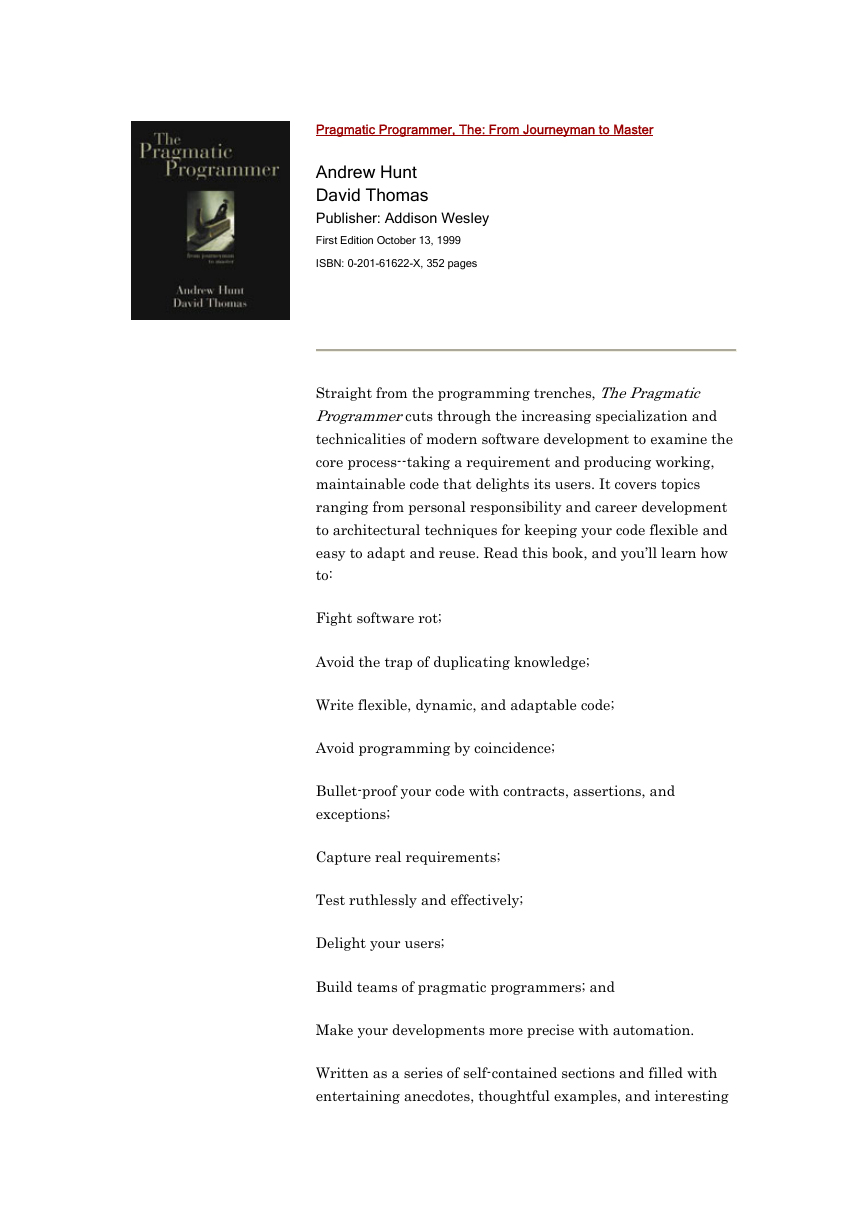
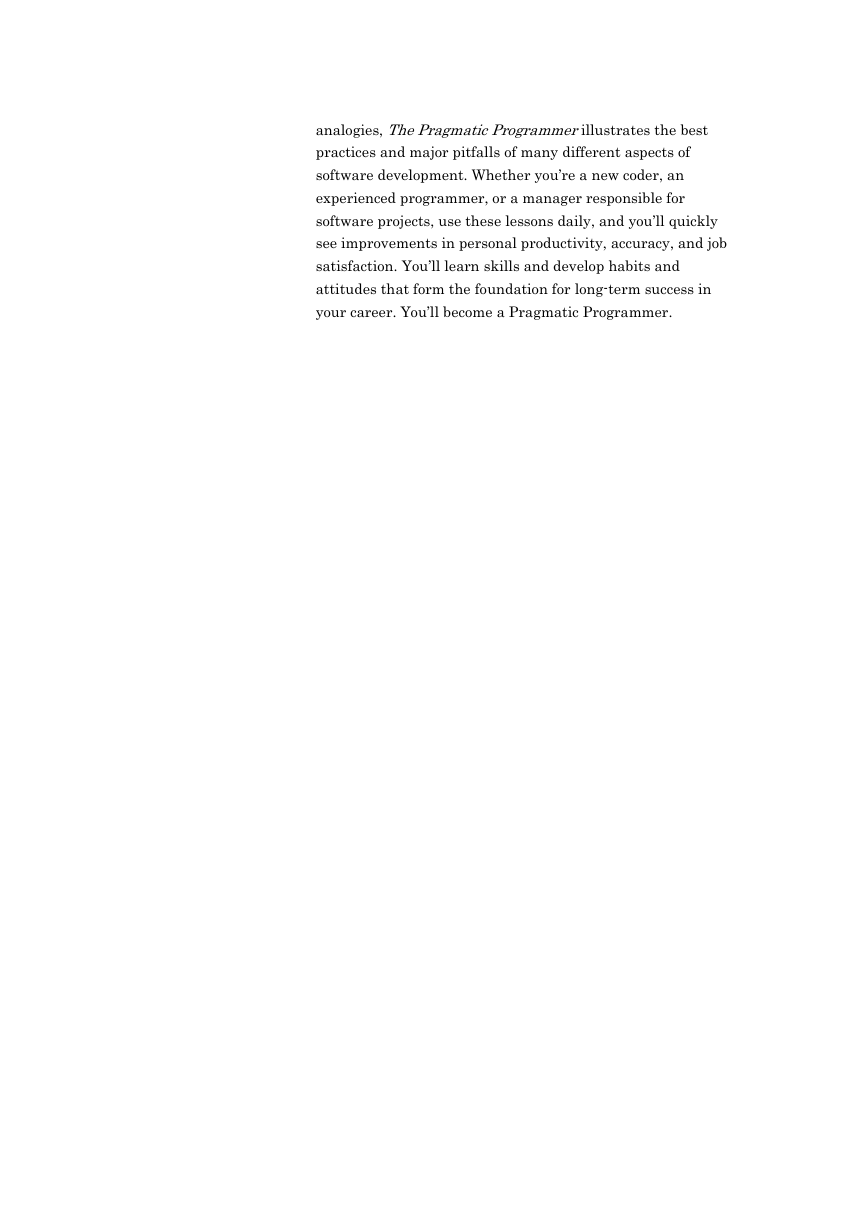
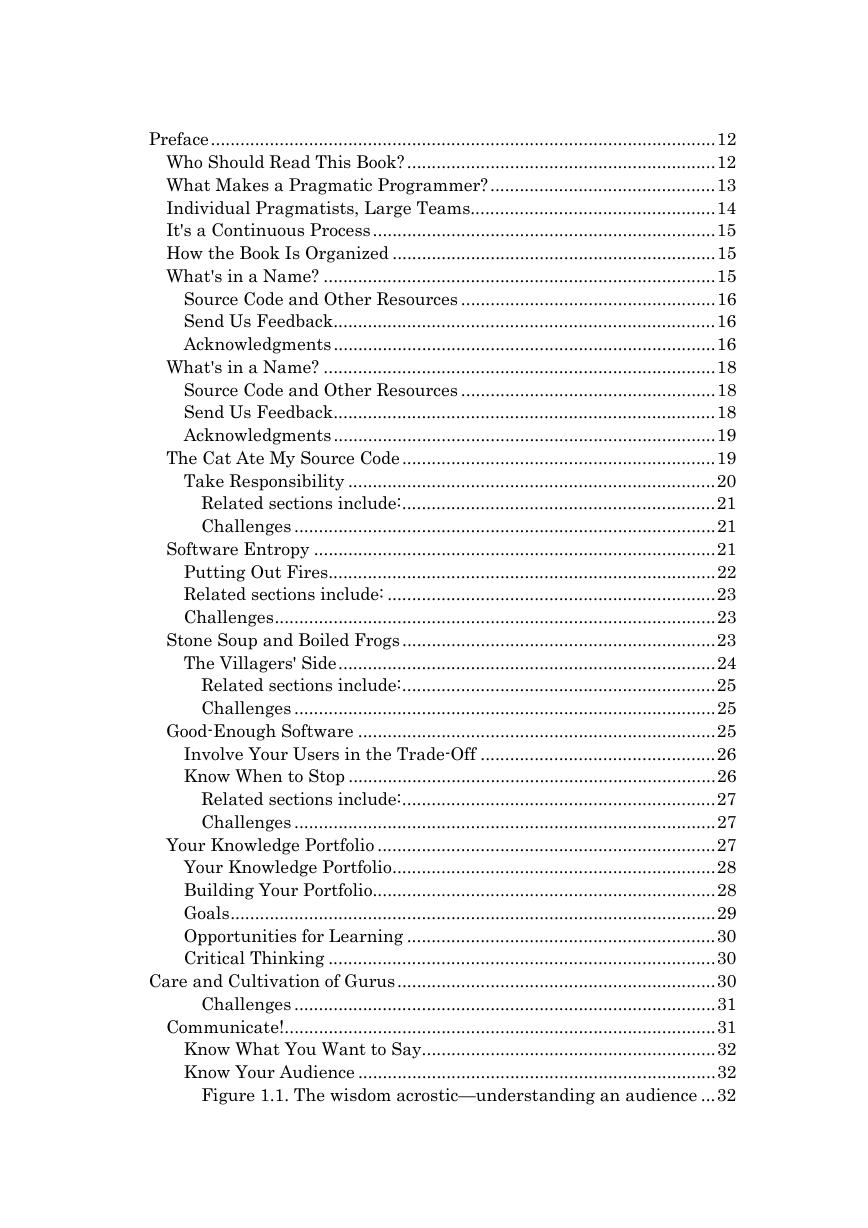
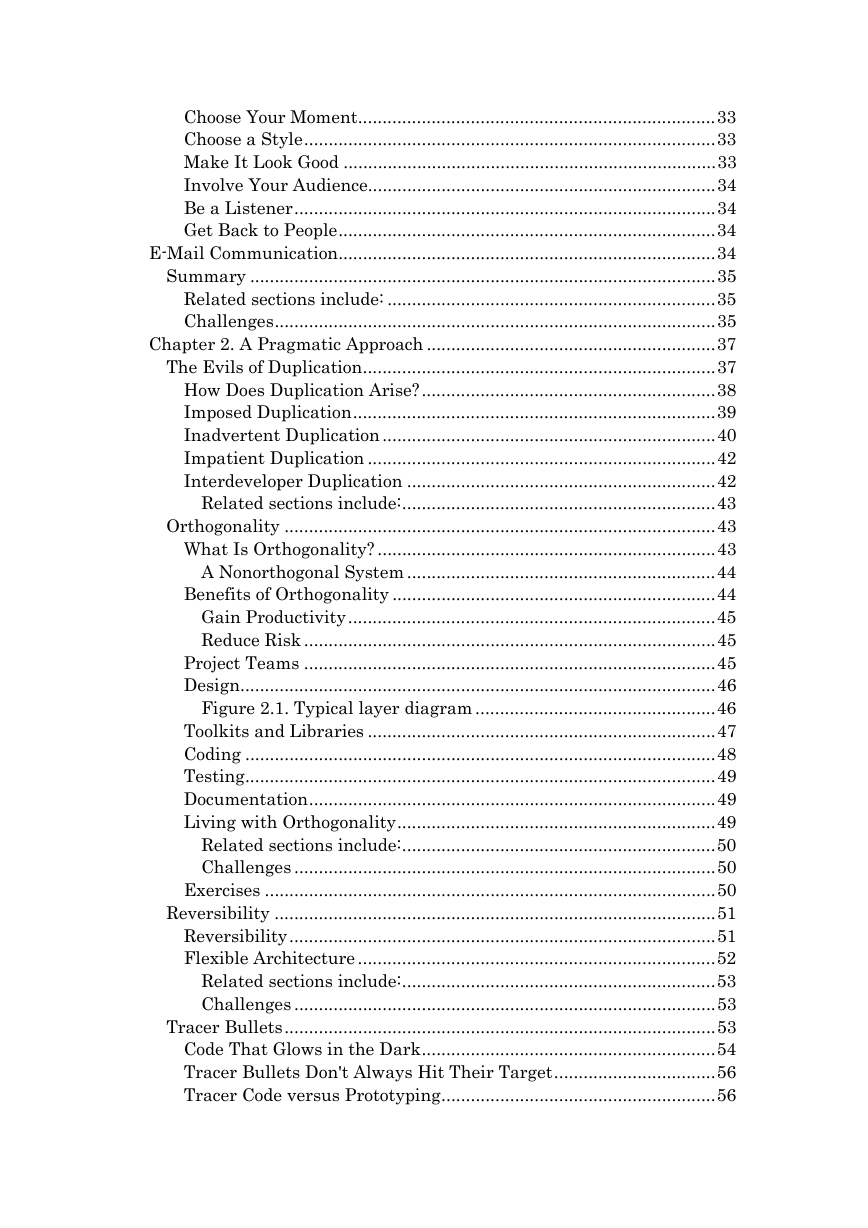
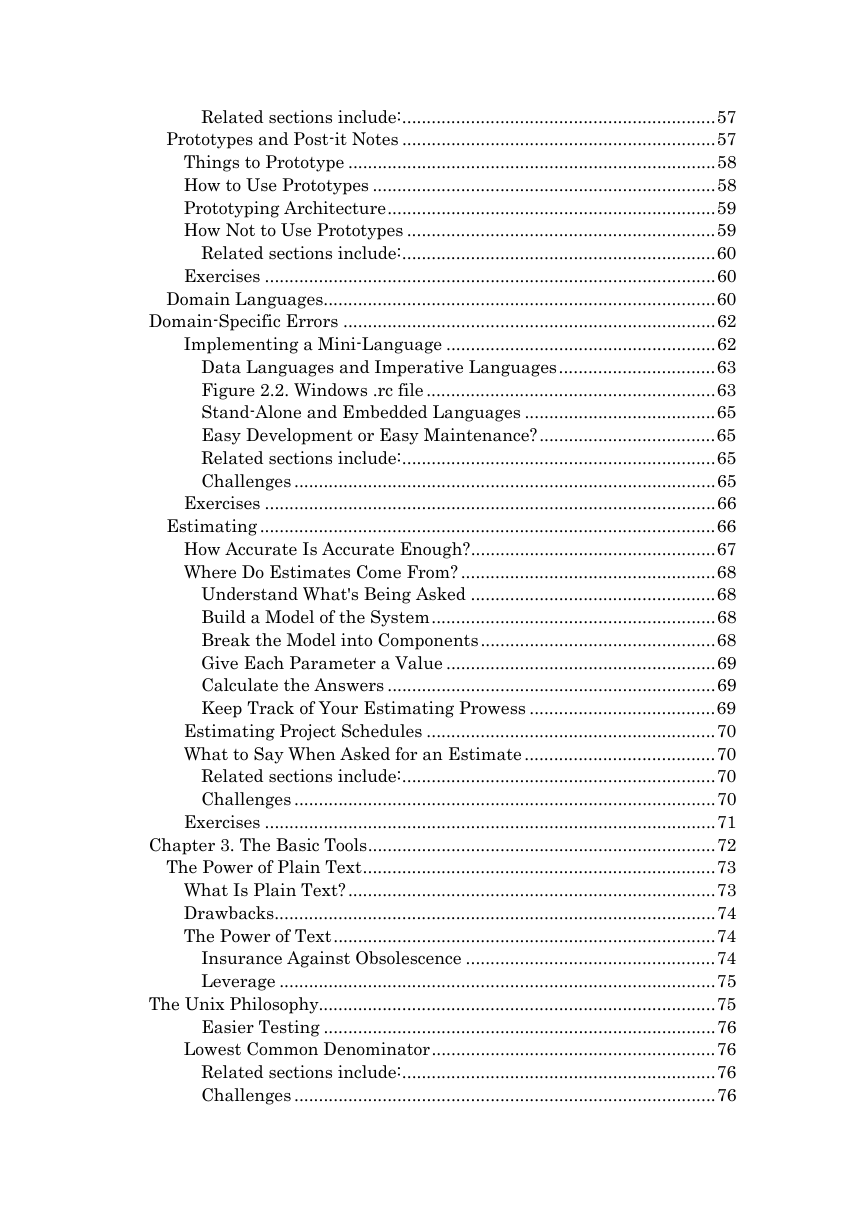
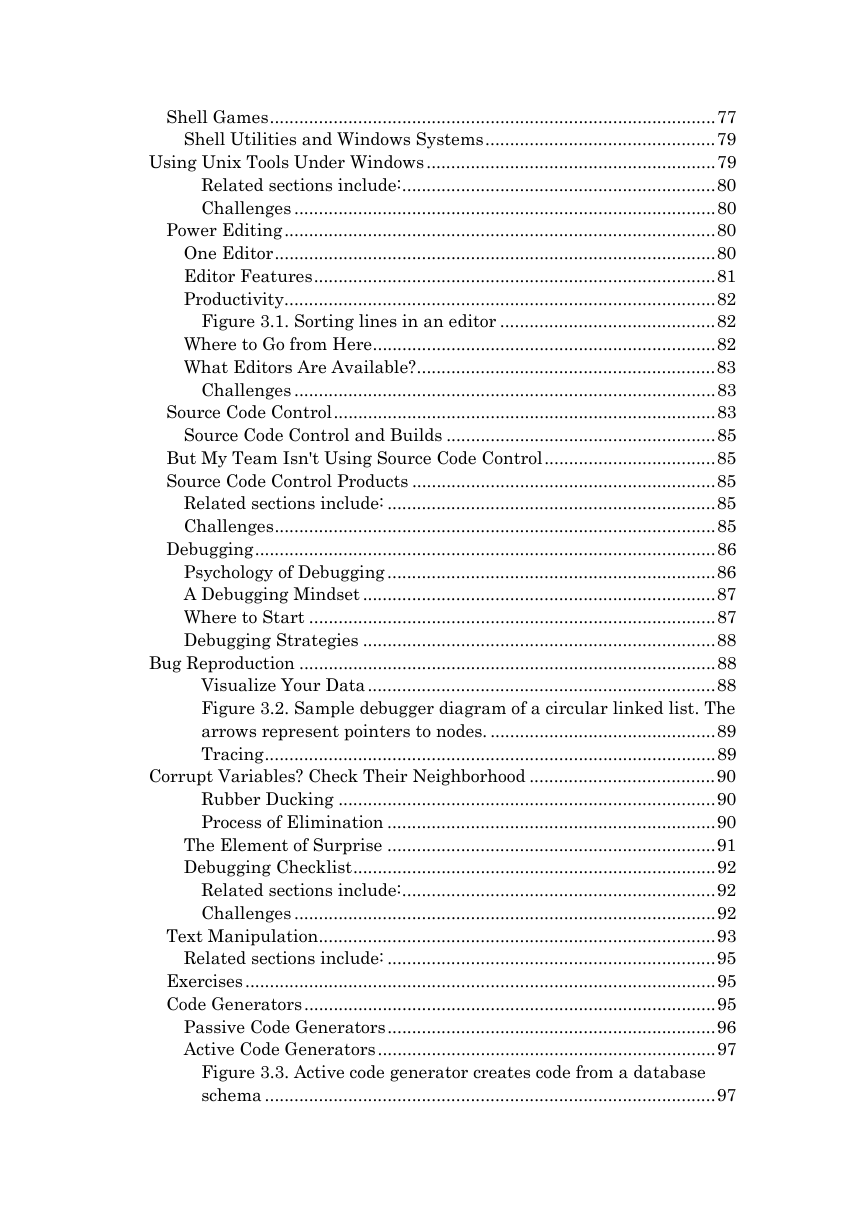
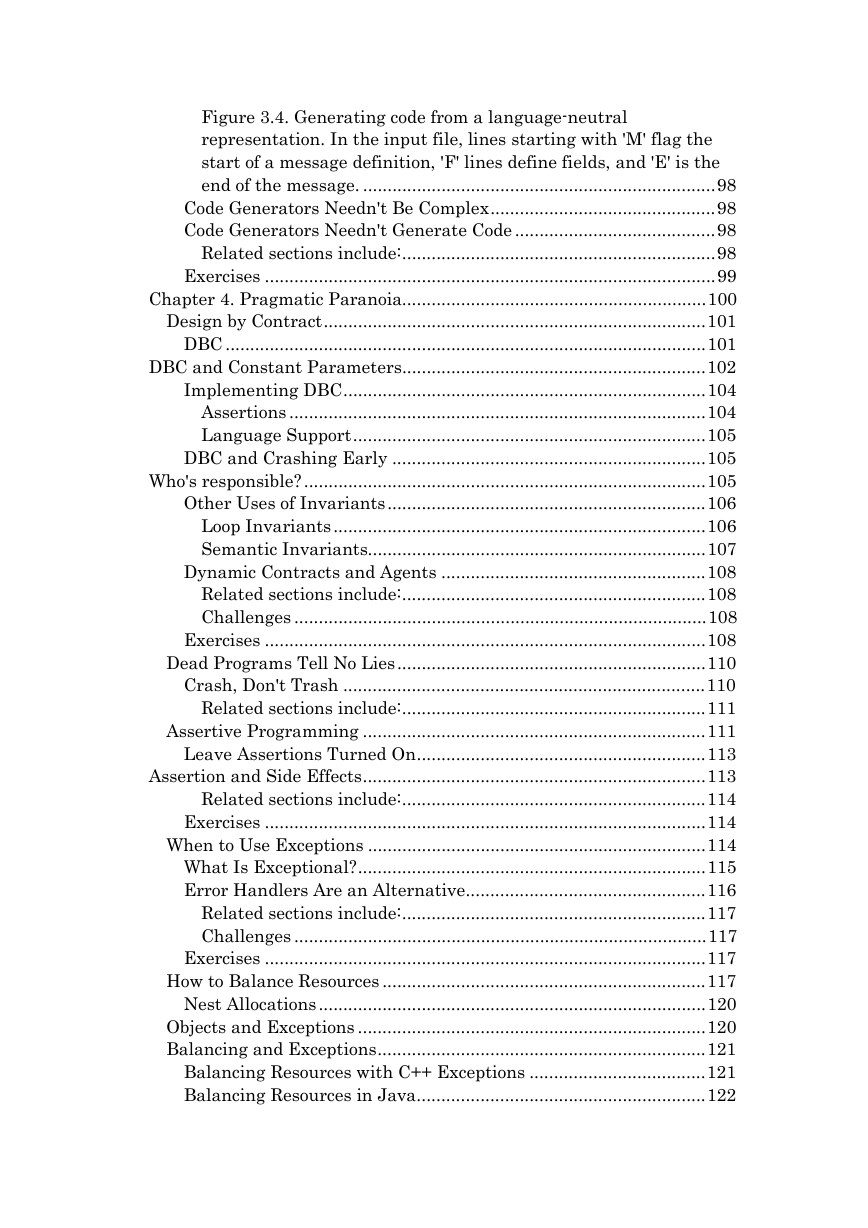
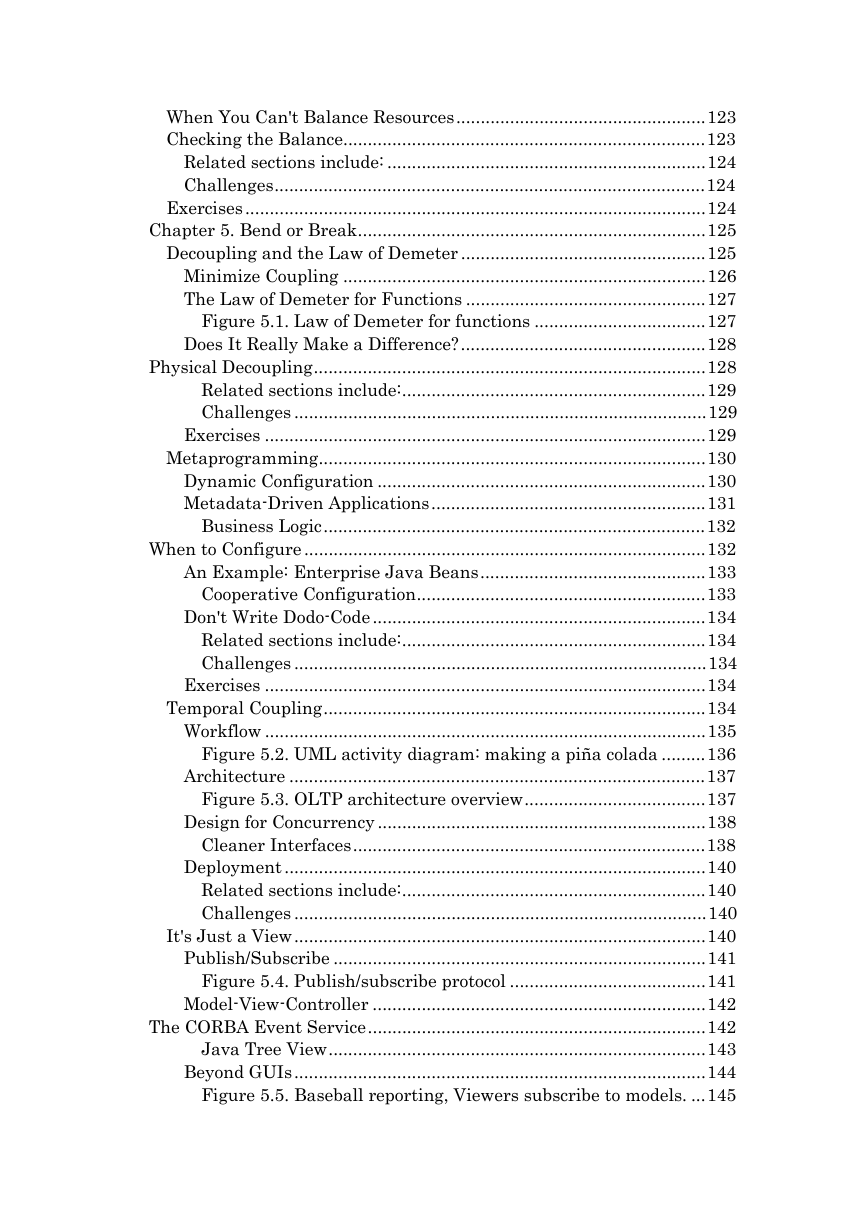








 2023年江西萍乡中考道德与法治真题及答案.doc
2023年江西萍乡中考道德与法治真题及答案.doc 2012年重庆南川中考生物真题及答案.doc
2012年重庆南川中考生物真题及答案.doc 2013年江西师范大学地理学综合及文艺理论基础考研真题.doc
2013年江西师范大学地理学综合及文艺理论基础考研真题.doc 2020年四川甘孜小升初语文真题及答案I卷.doc
2020年四川甘孜小升初语文真题及答案I卷.doc 2020年注册岩土工程师专业基础考试真题及答案.doc
2020年注册岩土工程师专业基础考试真题及答案.doc 2023-2024学年福建省厦门市九年级上学期数学月考试题及答案.doc
2023-2024学年福建省厦门市九年级上学期数学月考试题及答案.doc 2021-2022学年辽宁省沈阳市大东区九年级上学期语文期末试题及答案.doc
2021-2022学年辽宁省沈阳市大东区九年级上学期语文期末试题及答案.doc 2022-2023学年北京东城区初三第一学期物理期末试卷及答案.doc
2022-2023学年北京东城区初三第一学期物理期末试卷及答案.doc 2018上半年江西教师资格初中地理学科知识与教学能力真题及答案.doc
2018上半年江西教师资格初中地理学科知识与教学能力真题及答案.doc 2012年河北国家公务员申论考试真题及答案-省级.doc
2012年河北国家公务员申论考试真题及答案-省级.doc 2020-2021学年江苏省扬州市江都区邵樊片九年级上学期数学第一次质量检测试题及答案.doc
2020-2021学年江苏省扬州市江都区邵樊片九年级上学期数学第一次质量检测试题及答案.doc 2022下半年黑龙江教师资格证中学综合素质真题及答案.doc
2022下半年黑龙江教师资格证中学综合素质真题及答案.doc